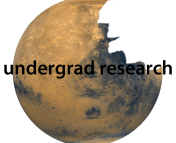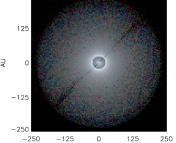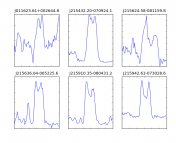 For those who don’t remember the undergrad research series: this is where we feature the research that you’re doing. If you’ve missed the previous installments, you can find them under the “Undergraduate Research” category here.
For those who don’t remember the undergrad research series: this is where we feature the research that you’re doing. If you’ve missed the previous installments, you can find them under the “Undergraduate Research” category here.
As the summer begins to wind down, many of you are probably finishing up REUs or summer research projects. We want to hear from you! Think you’re up to the challenge of describing your research carefully and clearly to a broad audience, in only one paragraph? Then send us a summary of it!
You can share what you’re doing by clicking on the “Your Research” tab above (or by clicking here) and using the form provided to submit a brief (fewer than 200 words) write-up of your work. The target audience is one familiar with astrophysics but not necessarily your specific subfield, so write clearly and try to avoid jargon. Feel free to also include either a visual regarding your research or else a photo of yourself!
We look forward to hearing from you!
************
E.Q. Finney
EQ is a physics major at Scripps College in Claremont, CA. She conducted her research on galaxy orientation within clusters of galaxies during the summer of 2012, under the guidance of Dr. David Wittman and Will Dawson at UC Davis. She is currently researching merging galaxy clusters for her undergraduate senior thesis.
Despite a growing understanding of the large-scale structure of the Universe, little is known about the interactions between the galaxies that comprise the different substructures (filaments, sheets, clusters, voids). Observational and numerical studies have raised questions about whether galaxies are preferentially oriented in certain directions, and if such orientation exists, whether it is in any way related to the proximity of filaments of galaxies. Using data from the Deep Lens Survey (DLS), we analyzed the orientations of galaxies with respect to the axes of presumed filaments, examining general trends as well as redshift evolution of orientation patterns. We are also currently investigating the differences in the behavior of red and blue galaxies, and galaxies with differing radii from the center of the cluster. No statistically significant results were found in the overall analysis, but the other analyses are still in progress.




